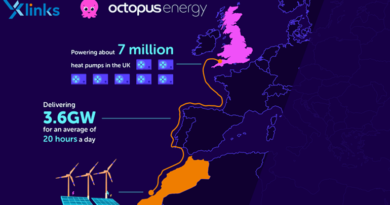5 reasons why COP28, the UN climate talks, are worth your attention
DUBAI, United Arab Emirates (AP) Ask most people what the annual U.N. climate talks are, and the likely answer will be, “Huh?” Ask those who do know, and the answer may be, “Why should I care?”
The negotiations, called the Conference of Parties, are nearly two weeks long and in their 28th iteration in Dubai. Delegates use wonky terms like “NDCs,” “1.5 degrees,” and “loss and damage,” not exactly conversation starters at parties. Any final decision is non-binding, meaning countries can agree to something and then not follow through. And when tens of thousands of people travel to the event, a lot of greenhouse gas emissions are produced, which is The plans are required by all nations that signed on to the 2015 Paris Agreement, arguably the most significant Conference of Parties to date. The plans are public, setting broad targets that industries and individuals in respective countries can see while also providing a chance for other countries and news organizations to scrutinize them. Countries are encouraged and expected to update and “raise ambition” in their plans, creating a level of peer pressure for nations to keep promissory to the entire point of the conference.
So why bother?
Even many climate watchers sometimes ask that question, and there is a growing debate about whether the current process needs major reforms. But viewed with a long lens—and with the proviso that progress is often more of a slow trickle than a dramatic event and impact—there are many reasons that the talks can prove worthwhile.
THEY express PEER PRESSURE
The push for compliance (iAs extreme weather events driven by climate change have increased and intensified, climate scientists have pushed to limit warming to 1.5. These days, just about every discussion about climate change has 1.5 in mind.
For example, that 1.5 guide is at the heart of the Biden administration’s climate goals, which include the Inflation Reduction Act in the United States, the largest climate legislation in U.S. history that is pumping billions of dollars into the green energy transition.
It’s also used as the lens through which many decisions are seen. When oil companies announce plans to launch new drilling projects that will lock in oil and gas production for decades, policymakers can and do criticize the plans as not keeping within the 1.5 goal. That doesn’t necessarily stop oil companies, or anybody, from making decisions that go against the goal. Still, it provides a frame of reference, which is powerful.
a public forum) is a key part of COP—in the form of the development of “Nationally Determined Contributions,” referred to as NDCs.
THEY PRODUCE CLEAR GOALS
That’s something that individual entities sometimes have trouble doing.
The Paris agreement established a defining goal that has guided climate discussions ever since: cut emissions from the burning of fossil fuels to make sure average global temperatures don’t go beyond 2 degrees Celsius (3.6 degrees Fahrenheit) since preindustrial times, and ideally not over 1.5 degrees Celsius (2.7 degrees Fahrenheit). Currently, temperatures have increased by about 1.2 degrees Celsius (2.2 degrees Fahrenheit).
These are plans by individual countries to reduce their use of oil, gas, and coal, which produce greenhouse gas emissions that cause climate change, and to lay out how they plan to adapt to the impacts of extreme weather events.
THEY FRAME DEBATES
Deciding how to talk about something can be an important part of getting things done.
Last year’s climate talks, COP27 in Egypt, produced a landmark agreement for rich countries to contribute to a fund to help developing nations adapt to climate change. For decades, environmental activists had argued that a “loss and damage” fund was necessary because rich nations, which industrialized with fossil fuels, were largely responsible for climate change while developing countries were being hit the hardest, as they didn’t have the resources to withstand floods, heat waves, prolonged droughts, and other manifestations of a warming world.
Early discussions of loss and damage at COPs were always on the fringes, not even on the official agenda. That changed last year, as the topic, and thus the decision, ended up being the centerpiece of the summit.
In a larger sense, today many discussions of climate, from reducing emissions to paying for a transition to green energies like wind and solar, are framed around the idea that rich countries are historically responsible for the current situation and thus have a moral imperative to pay more to confront it.
Source: /apnews.com




